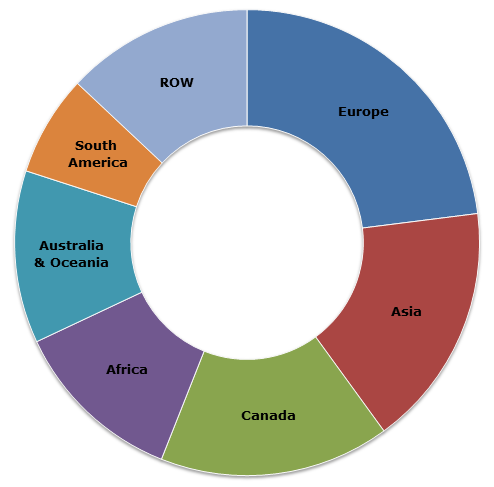Thallium is quite an expensive metal with applications in fiber optic industry, glass lenses, photocells, high-temperature superconductors (HTS materials are used in wireless communications), healthcare (radioactive thallium isotope 201 is used in medical imaging) and some other high-tech and specialized areas. The major source of commercial thallium is the trace amounts found in copper, lead, zinc, and other sulfide ores, the processing of which provides thallium as a byproduct.
When the market for thallium is characterized, it is possible to single out a number of its most prominent features. Firstly, the global thallium market is rather small and limited, though its application in many compounds (carbonates, carboxylates, halides, hydrides, oxides and hydroxides, nitrates, sulfates, and organometallics) makes the task of delineating thallium market boundaries quite difficult. Thus, though small in volumes, thallium presence in many important compounds substantiates its vitality and potential for value adding. Secondly, thallium statistics is hard to obtain as most producers do not publish their production data, which complicates forecasting and analysis. Thirdly, its extreme toxicity is another stumbling block which increases uncertainty in predicting thallium commercial trajectories. Consequently, according to some analysts, thallium may fall under the jurisdiction of the law of diminishing returns when its would-be commercial benefits may subside at some point in future. Fourthly, the thallium market is susceptible to large fluctuations with respect to demand, price and supply volume, which is often governed by macroeconomic situation, availability of substitutes, trade tariff policies and environmental regulations. Fifthly, the global thallium market demonstrates quite even distribution of thallium resources between various regions of the world, but fairly uneven spread of production facilities with two main producers of primary thallium in the world being Kazakhstan and China.
Thallium: structure of the global resources by region

Based on the above thallium market features, it is possible to ascertain that the demand for thallium will grow at small rates, primarily from healthcare companies, as well as producers of optic fibers and photocells. The level of the world production will also gradually increase due to the development of new deposits in Brazil.
More information on the thallium market can be found in the insightful report “Thallium: 2015 World Market Review and Forecast”.
